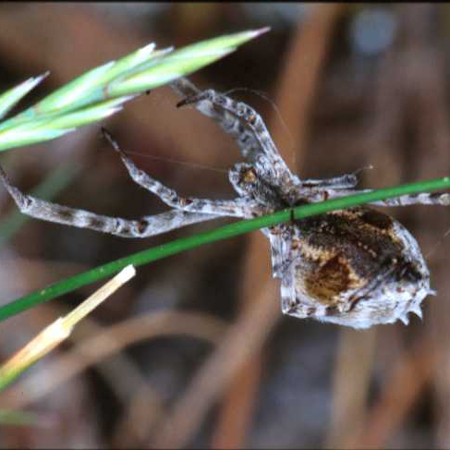
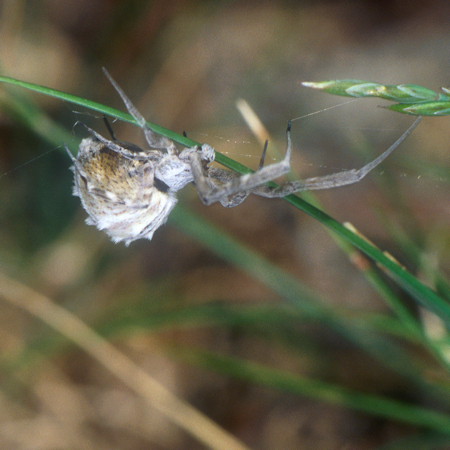
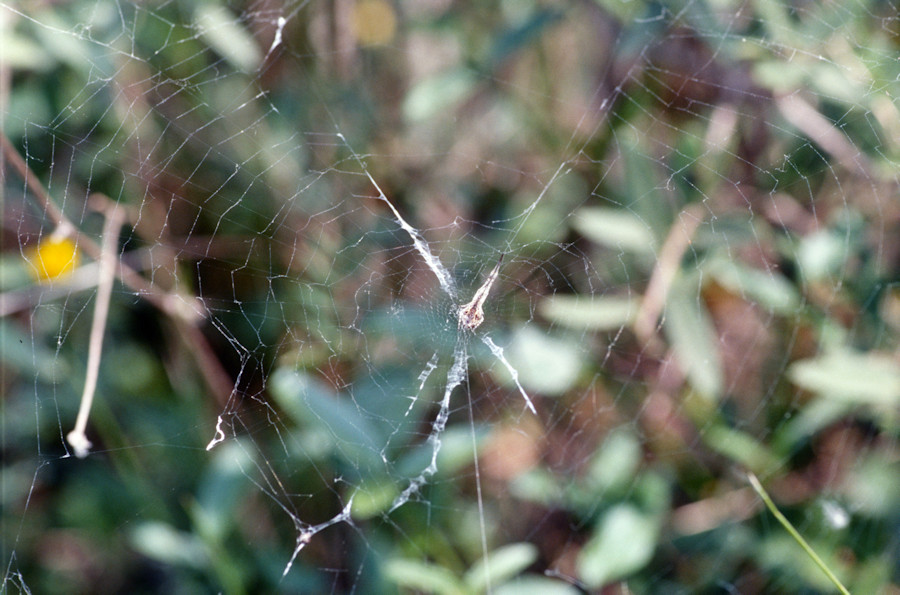
Only two members in our region belong to this family, Uloborus walckenaerius and
Hyptiotes paradoxus, and they can be found in the northern part of Europe.
These spiders are unique because they do not possess poison glands and therefore
spent a lot of time spinning their prey in their cribellate silk.
In greenhouses, however, we can also encounter Uloborus plumipes as far north as Aberdeen in Scotland.
World wide the family is represented by 18 genera and more than 240 species.
Genus Uloborus

The spider can be easily mistaken for a Cyclosa, a spider from the family
Araneidae, because of their triangular formed abdomen.
However, Uloborus constructs her wheel web almost horizontally. The spiders, with her white hairs
furnished body, hangs below her web in a band of silk that runs across it.
The spider measures between 3 and 6 mm.
 |
 |
| Uloborus walckenaerius | Uloborus walckenaerius |
 |
|
| Uloborus walckenaerius | |
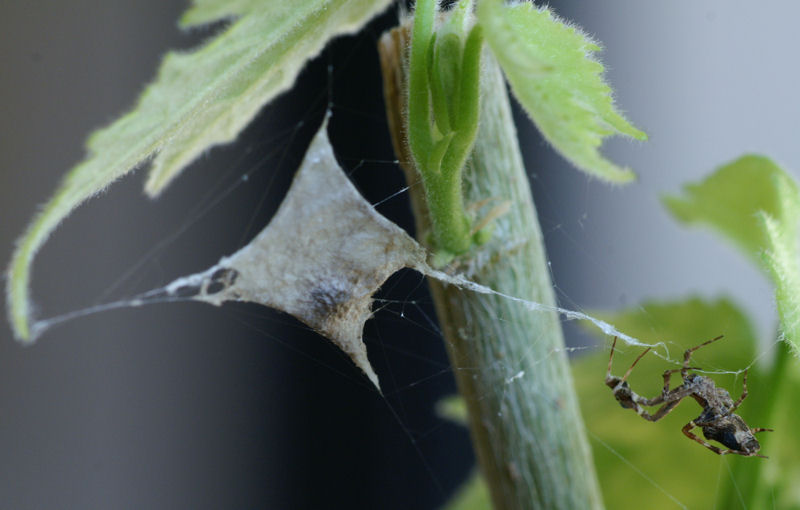
Uloborus plumipes with egg-sac
Below the greenhouse spider Uloborus plumipes. Note the hairy 'bracelets' an the end of here fore legs. Their name Latin plumipes means "feather foot".
Other common names for this spider are: "Feather-legged lace weaver" and "Garden center spider".
When spotted in their horizontal webs of 10 to 20 cm in diameter they look like pieces of dirt. Egg-sacs look like dry leafs and are coloured papery brown.
Their normal habitat is the Mediterenean, Africa and southern Asia.
The spider length is between 3 and 6 mm.
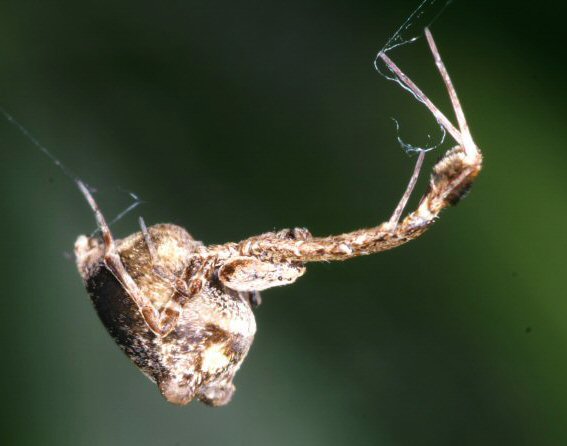
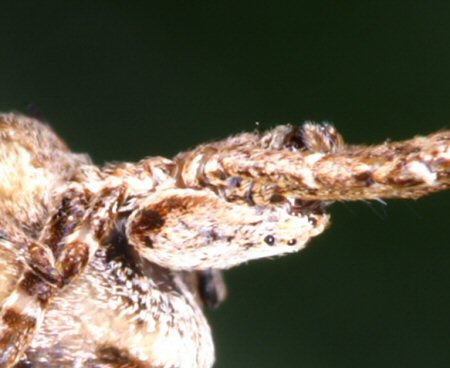
Uloborus plumipes
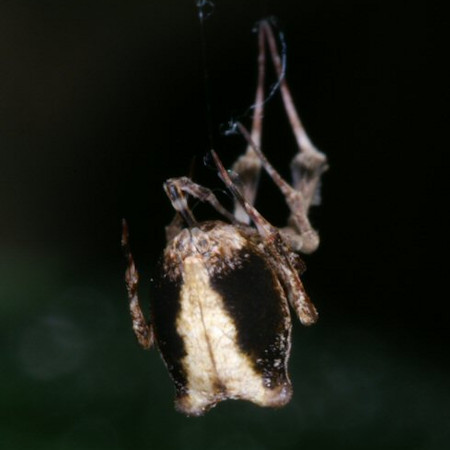
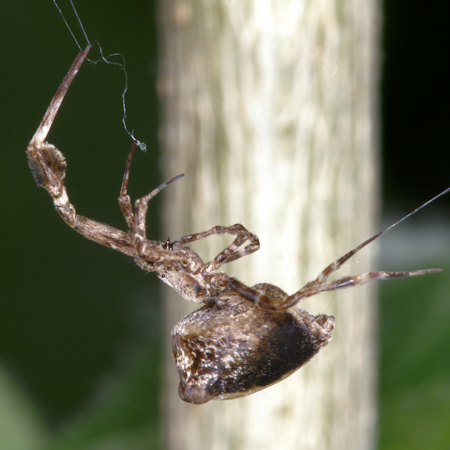
Uloborus plumipes
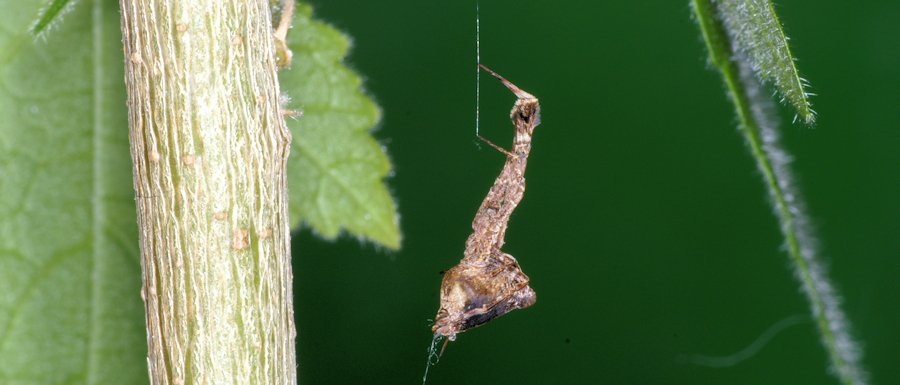
Genus Hyptiotes
These spiders can be found on schrubs and evergreen trees.
Their size is between 3 and 6 mm and colour ranges from ginger to dark brown.
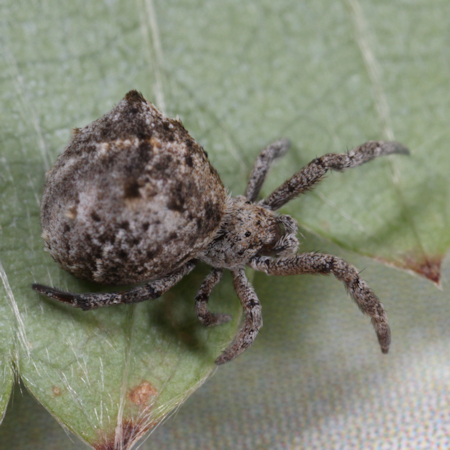 |
|
Hyptiotes paradoxus |
Hyptiotes paradoxus |
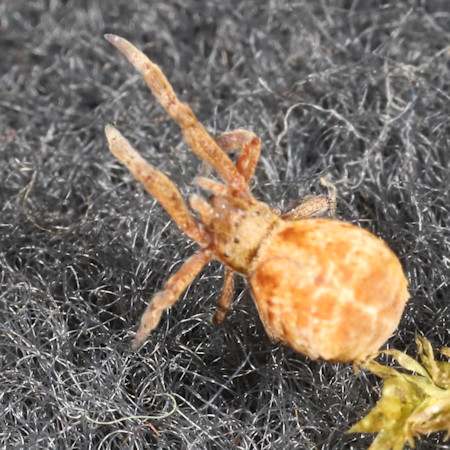 |
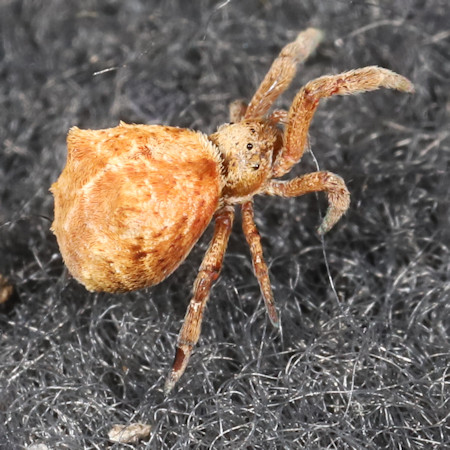 |
| Hyptiotes paradoxus | Hyptiotes paradoxus |
Ed Nieuwenhuys, 6 October 2020
24 september 2018,
26 may 2007,
11 may 2007,15 August, 1998